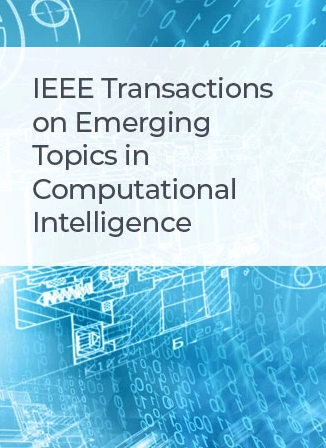基于深度学习的人-物交互检测研究综述
IF 5.3
3区 计算机科学
Q1 COMPUTER SCIENCE, ARTIFICIAL INTELLIGENCE
IEEE Transactions on Emerging Topics in Computational Intelligence
Pub Date : 2024-12-26
DOI:10.1109/TETCI.2024.3518613
引用次数: 0
摘要
人-物交互(HOI)检测因其广泛的应用而备受关注,包括人机交互、安全监控、自动体育解说等。HOI检测旨在检测给定图像或视频中的人、物体及其相互作用,因此它需要比常规对象识别或检测任务更高层次的图像语义理解。由于存在一些独特的困难,如多对象交互、交互类别的长尾分布等,在技术上也更具挑战性。目前,深度学习方法在HOI检测方面已经取得了很好的成绩,但是关于基于深度学习的HOI检测的最新进展的综述却很少。此外,目前基于阶段的HOI检测方法类别正在引起社区讨论和初学者学习的混乱。为了填补这一空白,本文总结、分类和比较了过去九年来使用深度学习进行HOI检测的方法。首先,我们总结了HOI检测方法的流水线。然后,我们将现有的方法分为三类(两级、一级和基于变压器),在公式和原理图上进行区分,并定性地比较了它们的优缺点。之后,我们详细回顾了每一类方法,重点介绍了图像的HOI检测方法。此外,我们还探讨了利用基础模型进行HOI检测的发展过程。我们还定量地比较了现有方法在公共HOI数据集上的性能。最后,指出了未来HOI检测的研究方向。本文章由计算机程序翻译,如有差异,请以英文原文为准。
A Survey of Human-Object Interaction Detection With Deep Learning
Human-object interaction (HOI) detection has attracted significant attention due to its wide applications, including human-robot interactions, security monitoring, automatic sports commentary, etc. HOI detection aims to detect humans, objects, and their interactions in a given image or video, so it needs a higher-level semantic understanding of the image than regular object recognition or detection tasks. It is also more challenging technically because of some unique difficulties, such as multi-object interactions, long-tail distribution of interaction categories, etc. Currently, deep learning methods have achieved great performance in HOI detection, but there are few reviews describing the recent advance of deep learning-based HOI detection. Moreover, the current stage-based category of HOI detection methods is causing confusion in community discussion and beginner learning. To fill this gap, this paper summarizes, categorizes, and compares methods using deep learning for HOI detection over the last nine years. Firstly, we summarize the pipeline of HOI detection methods. Then, we divide existing methods into three categories (two-stage, one-stage, and transformer-based), distinguish them in formulas and schematics, and qualitatively compare their advantages and disadvantages. After that, we review each category of methods in detail, focusing on HOI detection methods for images. Moreover, we explore the development process of using foundation models for HOI detection. We also quantitatively compare the performance of existing methods on public HOI datasets. At last, we point out the future research direction of HOI detection.
求助全文
通过发布文献求助,成功后即可免费获取论文全文。
去求助
来源期刊

IEEE Transactions on Emerging Topics in Computational Intelligence
Mathematics-Control and Optimization
CiteScore
10.30
自引率
7.50%
发文量
147
期刊介绍:
The IEEE Transactions on Emerging Topics in Computational Intelligence (TETCI) publishes original articles on emerging aspects of computational intelligence, including theory, applications, and surveys.
TETCI is an electronics only publication. TETCI publishes six issues per year.
Authors are encouraged to submit manuscripts in any emerging topic in computational intelligence, especially nature-inspired computing topics not covered by other IEEE Computational Intelligence Society journals. A few such illustrative examples are glial cell networks, computational neuroscience, Brain Computer Interface, ambient intelligence, non-fuzzy computing with words, artificial life, cultural learning, artificial endocrine networks, social reasoning, artificial hormone networks, computational intelligence for the IoT and Smart-X technologies.
 求助内容:
求助内容: 应助结果提醒方式:
应助结果提醒方式:


